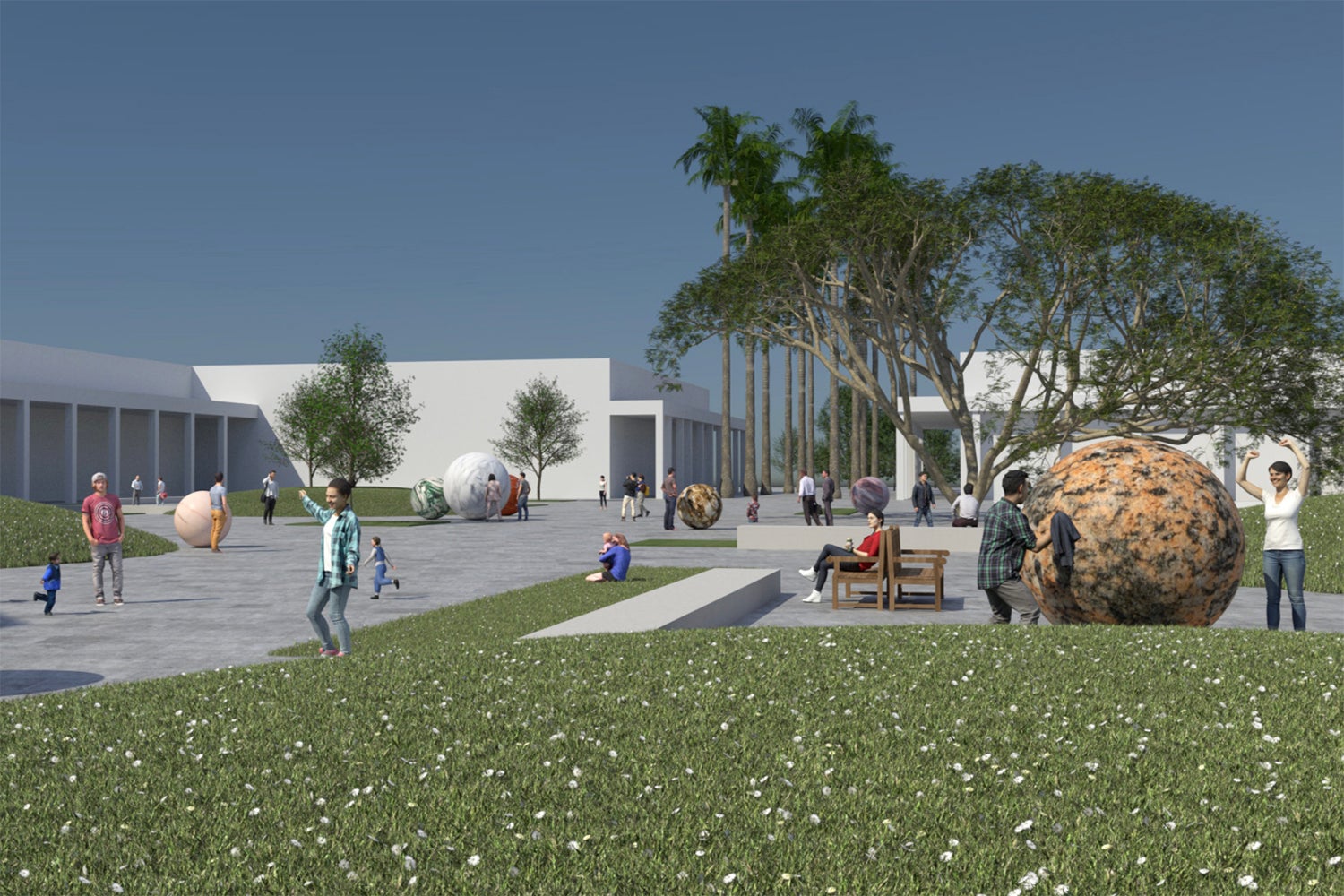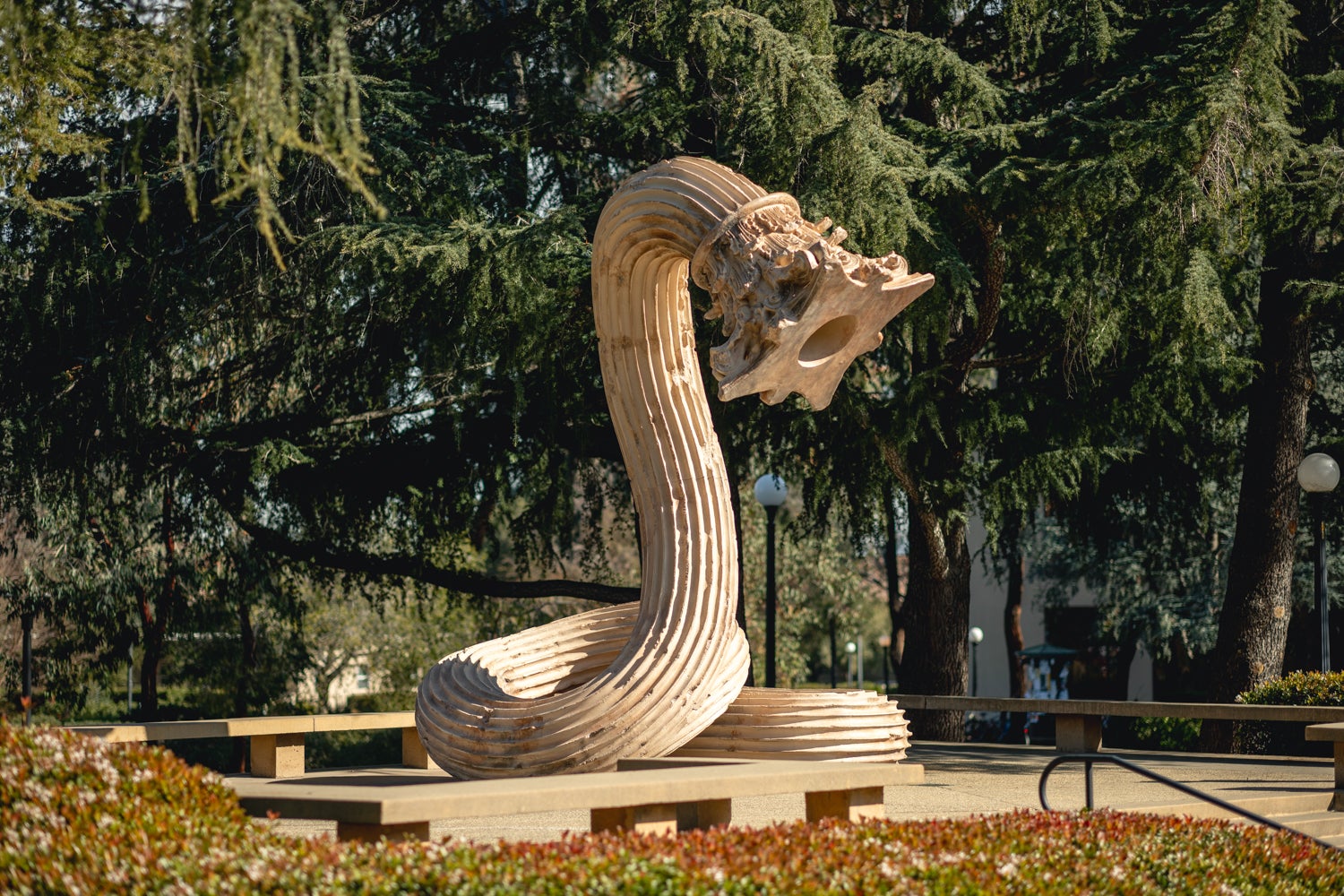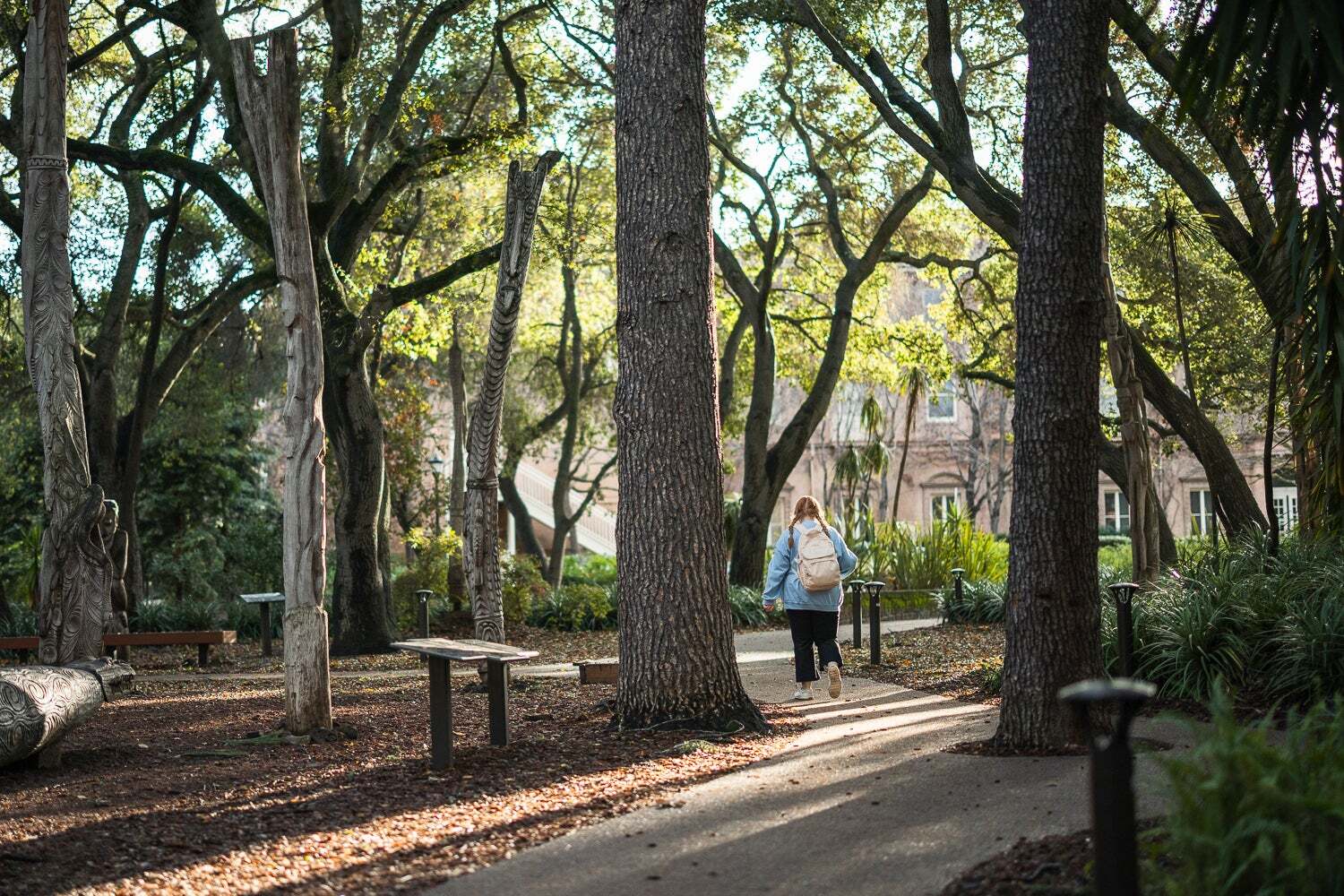Stanford University Public Art Committee announces two major art installations to be unveiled on campus in the next academic year. Sculptor and filmmaker Alia Farid has been chosen to create a temporary work as part of the Stanford Plinth Project, and interactive installation artist and Stanford faculty member Camille Utterback has been commissioned to develop a permanent work for Stanford’s new Data Science and Computation Complex (DSCC). Farid’s work is expected to be installed on Meyer Green’s plinth in the fall of 2024 and will remain on view for three years. Utterback’s work is scheduled to be installed in the winter of 2025. Both works will be viewable by the public.
“Public art is so meaningful for how it brings creative vitality to the Stanford campus in a way that is tangible and open to everyone,” said Deborah Cullinan, vice president for the arts and co-chair of the Public Art Committee with David Lenox, university architect and executive director of campus planning. “It’s thrilling to welcome Alia and her thoughtful work to the university environment and to celebrate Camille as an extraordinary artist already in our midst.”
These publicly accessible projects promise rich engagement opportunities with students and the Stanford community.
Plinth Project: Amulets
“Amulets brings into view an inconspicuous yet significant object of Mesopotamian material culture,” writes Farid about the proposal of two large-scale amulets held up by one another, made of polyester resin, a modern material, and blue faience, the earliest form of ceramic glaze, invented more than 6000 years ago in ancient Mesopotamia, in what is today Iraq.
Working with a group of alum curators to collect and review artist nominations, the Public Art Committee selected Farid’s proposal for the Plinth Project based on its formal beauty, the resonance of significantly important themes to Stanford and the Bay Area, such as the social and environmental impact of extractive industries, and its direct engagement with the collections of Stanford’s Cantor Arts Center and Hoover Institution. Her work will replace the inaugural Plinth Project commission Hello by the Shanghai-based conceptual artist Xu Zhen.
Blue faience is used on tiles, vessels, amulets, beads, and other small objects – examples of which are in the Stanford Family Collections in the Cantor Arts Center – and is often associated with water and used to symbolize this natural element and its faculties: fertility, growth, abundance, and renewal.
In connection with work Farid has been developing on the social and environmental impact of extractive industries in southern Iraq and Kuwait, Amulets also comments obliquely on the environmental degradation and cultural erasure resulting from coalition wars in Iraq. The work’s focus on material history is a contemplation of plastics as a byproduct of oil and the oil reserves that lay beneath the subsoil of the Iraqi marshes, the global pursuit of which has led to the degradation of the water supply and the earth’s resources from which faience is derived.
Amulets at Stanford is Farid’s first North American public art commission. Recent and upcoming solo exhibitions include Chisenhale Gallery, London; Henie Onstad Kunstsenter outside Oslo, Norway; and Contemporary Art Museum Houston in partnership with Rivers Institute and Detroit Institute of Arts, Michigan. In 2023, Farid received The Lise Wilhelmsen Art Award, one of the world’s largest art prizes, and she was shortlisted for the most recent Artes Mundi, the U.K.’s leading biennial exhibition and international contemporary art prize. In 2023-2024, she was the David and Roberta Logie Fellow at Harvard Radcliffe Institute.
Data science, computation, art
“Writing my own software and designing my own interfaces, I develop physical-digital systems that engage people’s bodies instead of just their fingers and eyes,” writes Utterback, associate professor in the Department of Art and Art History in the School of Humanities and Sciences and, by courtesy, in the Department of Computer Science in the School of Engineering.
For the DSCC commission, an ad-hoc committee of Stanford faculty and senior staff sought dynamic artwork that employed the kinds of data-based and computational techniques that will be researched and taught in the building. The committee determined that Utterback’s interactive installation, which links computational systems to human movement and gesture, was an ideal fit for the new complex – and are excited to increase faculty representation in Stanford’s ambitious public art commissions.
Utterback’s permanent installation of hand-painted glass panels layered with live, responsive, computer-generated projections will span a four-story stairwell connecting two buildings in the Data Science and Computation Complex. Imagery will reference themes in the human history of encoding and storytelling linked to these processes, such as ancient record keeping, topographical maps, early bar graphs, and dark matter simulation. Responding to the presence and movement of people in the building, the installation raises questions regarding the connections between physical bodies, data, and how humans seek to understand and depict themselves in the world. Representing many cultural and technical histories, the work will provide an evolving platform to share the story of Stanford’s research and community at the intersection of data science, computer science, and symbolic systems.
Utterback has been a faculty member at Stanford since 2013. She is the recipient of numerous awards and honors, including a Media Arts Grant from the Creative Work Fund (2015) and a MacArthur Foundation Fellowship (2009). She has created site-specific installations for exhibitions and venues, including the American Museum of Natural History, New York, New York; National Portrait Gallery, Washington, D.C.; Pittsburgh Children’s Museum, Pennsylvania; Sacramento International Airport, California; San Jose International Airport, California; and Whitney Museum of American Art, New York, New York.
Robin Wander, University Communications: (415) 286-3689, robin.wander@stanford.edu


